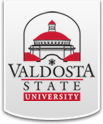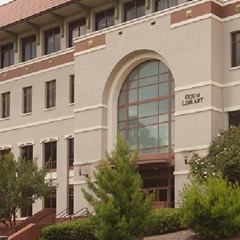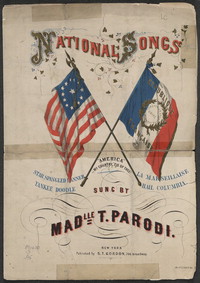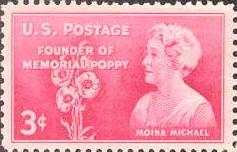We are pleased to announce the appointment of Dr. Alan Bernstein as Odum Library’s next university librarian and dean of the Master in Library and Information Science program!
——————–
From http://www.valdosta.edu/news/releases/bernstein.052512:
Alan Bernstein To Lead VSU’s
Odum Library Into The Future
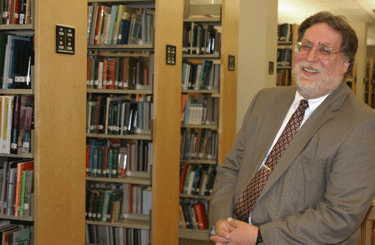 |
VALDOSTA — Effective July 1, Dr. Alan Bernstein will be Valdosta State University’s new university librarian and dean of the Master of Library and Information Science (MLIS) Program.
“I am very excited,†he said. “I appreciate the search committee’s trust in me, and I am anxious for the opportunity to take the library forward. I love the library. I love the people who work for the library.â€
In 2011, Bernstein was appointed interim associate university librarian and made responsible for all areas of Odum Library, as well as the administration, leadership, and management duties for the MLIS Program.
“Being associate university librarian was the next step up for me in my career,†said Bernstein, who first joined the Odum Library team in 1990 as a library assistant and worked his way up through the ranks as opportunities became available.
“Dr. Bernstein brings a wealth of experience and leadership to this position,†said Dr. Louis H. Levy, interim VSU president. “Libraries are changing; they are no longer just a repository of books, journals, and educational publications. They continue to evolve as the academic hub of activity and serve as the focal point for research and scholarly endeavors for students, faculty, and the broader university community.â€
Bernstein began his career at Valdosta State College as a student in 1978. He and his family had, just one year earlier, relocated from their home in New Jersey to South Georgia, and he wanted to study philosophy.
Before discovering his passion for working in a library, he said, “My goal was always to remain in academia. I really enjoyed the idea of working on a college campus.â€
After graduating with a Bachelor of Arts in philosophy in 1981, Bernstein moved to California to pursue graduate studies. He spent a couple of years working as a teaching associate in the Philosophy Department at the University of California in Irvine, Calif. By 1984, he realized he did not want to pursue his philosophy studies any longer.
“Teaching, however, was still on my mind,†he said.
Bernstein returned to Valdosta State in 1985 and worked as a part-time instructor in the Philosophy Department until 1993. Five years into that teaching job, he came across an advertisement for a part-time job in Odum Library.
“Working that job while I went back to school convinced me I wanted to stay in the library,†said Bernstein, who worked as a library assistant at the circulation desk until 1993. “I told the director that I would forget all about teaching if he could get me a full-time job in the library.â€
Bernstein went on to spend the next decade working as circulation manager in the library.
“Working in Circulation was great,†said the self-described lifelong student who earned a Master of Education in secondary education in 1992, a Master of Arts in history in 1995, and a Master of Library and Information Science in 2003, all from Valdosta State. “It’s a public service. I was able to work closely with students and learn what they were studying, what they were reading, listen to their stories ….â€
“I jumped at the chance to get a library degree,†he added. “I was the second person to graduate from the program, and I thoroughly enjoyed it.â€
In 2003, Bernstein was named associate professor of library science and circulation librarian. Six years later, he graduated with yet another degree from VSU, this one a Doctor of Education in curriculum and instruction. His dissertation was titled “The Nether World of Academic Librarians: Issues of Classification, Educative Mission, and Sense of Place.†His areas of scholarly interest and publication include library patron services and library administration.
“I knew that someday I wanted the chance to lead the library,†he said, “so I pursued the doctoral program. I knew that I really liked the library and enjoyed the work and had no plans of leaving.â€
Having grown up at Valdosta State and in the Odum Library, Bernstein said that he has a real feel for the campus community’s past, present, and future. He understands the university’s commitment to students, faculty, and staff and believes that ongoing relationship will only enhance his ability to serve library patrons and MLIS Program personnel and students.
Bernstein has worked in a variety of positions in the library, from the lowest to the highest and has a vested interest in fostering the growth of library employees, from students to staff to faculty. His accomplishments as interim associate university librarian include encouraging and overseeing a record number of funding pool proposals that have resulted in new classrooms, digital signage, and two new fine arts materials rooms for the library, and overseeing the creation of a successful plan for the MLIS Program to remove the “conditional†from its American Library Association accreditation.
Bernstein is married to Deborah Davis, certified archivist and director of Valdosta State University Archives and Special Collections. They first met as students on campus in the 1980s and have been married 14 years.
For more information, please contact Dr. Alan Bernstein, university librarian and dean of the Master of Library and Information Science Program, at (229) 333-5860 or at abernste@valdosta.edu.
On the Web:
www.valdosta.edu/library
by Jessica R. Pope
Communications Specialist
